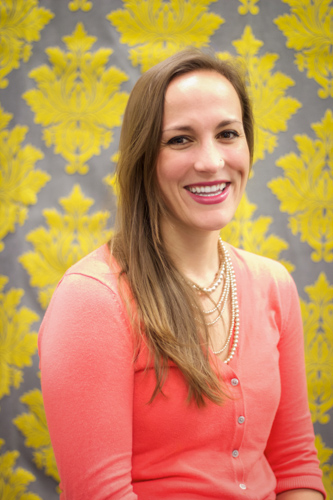Spanish Level 1- Face-to-Face Activities
🚦 Spanish Level 1, Activity 06 Practicing Directions/Locations (face-to-face) Remix by Kelly Arispe for K-12
Remixed by Kelly Arispe
Boise State University
Description:
¡Vamos a la uni!
This is the context that provides authenticity to the activity. We are practicing this important vocabulary and expressions for a real purpose (getting to a place or finding something). To be prepared for that, we have students practice real-world activities. In this context, the whole point is to help students do a virtual campus tour of a university. If you aren’t in Idaho, consider the following: Switch the map with a university map that is closer to the local context and customize the slides accordingly. Or, swap the map with a campus map at your institution (primary or secondary). You can take images or look for some on the Web. You might also ask students or a parent helper to take and submit images of their campus (if they have phones) a few days before to help you.
Proficiency Level: Novice Mid
Semantic Topics:
Spanish, Novice Mid, Preposiciones, Preposiciones, Maps, Mapas
NCSSFL-ACTFL World-Readiness Standards:
- Standard 1.1 – Students engage in conversations, provide and obtain information, express feelings and emotions, and exchange opinions.
- Standard 1.2 Students understand and interpret spoken and written Spanish on a variety of topics.
- Standard 1.3 Students present information, concepts, and ideas in Spanish to an audience of listeners or readers on a variety of topics.
Idaho Content Standards for World Languages:
- COMM 1.1 – Interact and negotiate meaning (spoken, signed, written conversation) to share information, reactions, feelings, and opinions.
- COMM 2.1 – Understand, interpret, and analyze what is heard, read, or viewed on a variety of topics.
NCSSFL-ACTFL Can-Do Statements:
- I can talk about the location of objects and the directions they move.
- I can present basic information about my community and/or a future university.
- I can name places on a map.
- In my own and other cultures, I can identify locations to get somewhere.
Materials Needed:
Warm-Up
Funny meme: “First Day of Class”
Using this funny meme, bring humor into the context: you don’t want to get lost around campus. For the virtual tour, students will be visiting the campus through images, video, and then looking at the campus map to get around. Before you do that, however, you want to review some important vocabulary.
Mini juego para practicar preposiciones
Play a game of Kahoot to review the vocabulary they already know and need for the main activity!
¡A practicar! Let’s Practice!
Grab an object from your class and ask a student to put it somewhere on the ground just within reach (up at the front of the class). The student should then tell you if the object is in front, to the right, or to the left. Keep your eyes closed and follow their instructions. Students can play this a few times with their partner but this time add in prepositions (on top of, beneath, etc.). You might have the next slide up on the screen to help them.
Main activity
Exploremos estas imágenes. Let’s look at some images.
First, you’ll show them images of the university. Ask students to write down a list of words that associate with what they see. After showing several images, ask students to volunteer the words from their list. The teacher can scaffold a sentence or two that describes the university by writing it on the board, modeling how these descriptions string together to form a sentence.
Hagan una pregunta. Ask a question.
Watch the video once. It has music and no narration. Ask students to work in pairs to write a question they have about the university. Have students submit the question using mentimeter (or write them on the board for a low-tech option) and the teacher can then answer the questions whole-class (researching them with the students, live or making an educated guess; the point is to have them practice question-asking).
¿Qué prefieres? What do you prefer?
Ask students this question and have them respond with a show of hands: Mapa físico (count hands) mapa google (count hands). Then, write the numbers on the board and model a comparison: Hay más estudiantes que prefieren
Mapa de Boise State / Boise State Map
Explain the rules of the upcoming activity:
- Using the slides with maps, students ask one another questions about where certain buildings are in relation to each other.
- Ask“¿Dónde está este lugar?”
- The partner should work together to describe the location. Have them try to use prepositions to describe where the place is at.
- For example, “la biblioteca está cerca al edificio de administración”
Note, there is one model that you, the teacher, will demonstrate and then there are 8 slides so each partner asks 4 questions and responds to four questions, taking turns
wrap-Up
Have students tell you how to get to their favorite restaurant or ice cream shop. They can write two general descriptions like “it’s next to _____” or it’s to the left of “___”. The next slide has the example and vocabulary all together so you can have them reference it while they write.
End of Activity
- Read Can-Do statements once more and have students evaluate
their confidence.
(Use thumbs up/thumbs down or download our student cards.) - Encourage students to be honest in their self-evaluation.
- Pay attention, and try to use feedback for future activities!
NCSSFL-ACTFL Can-Do Statements:
- I can talk about the location of objects and the directions they move.
- I can present basic information about my community and/or a future university.
- I can name places on a map.
- In my own and other cultures I can identify locations to get somewhere.


